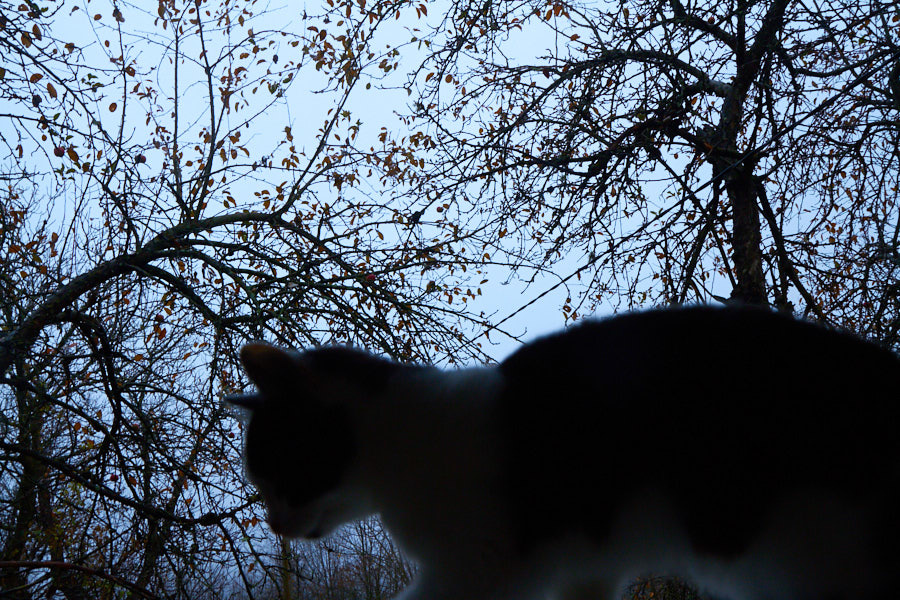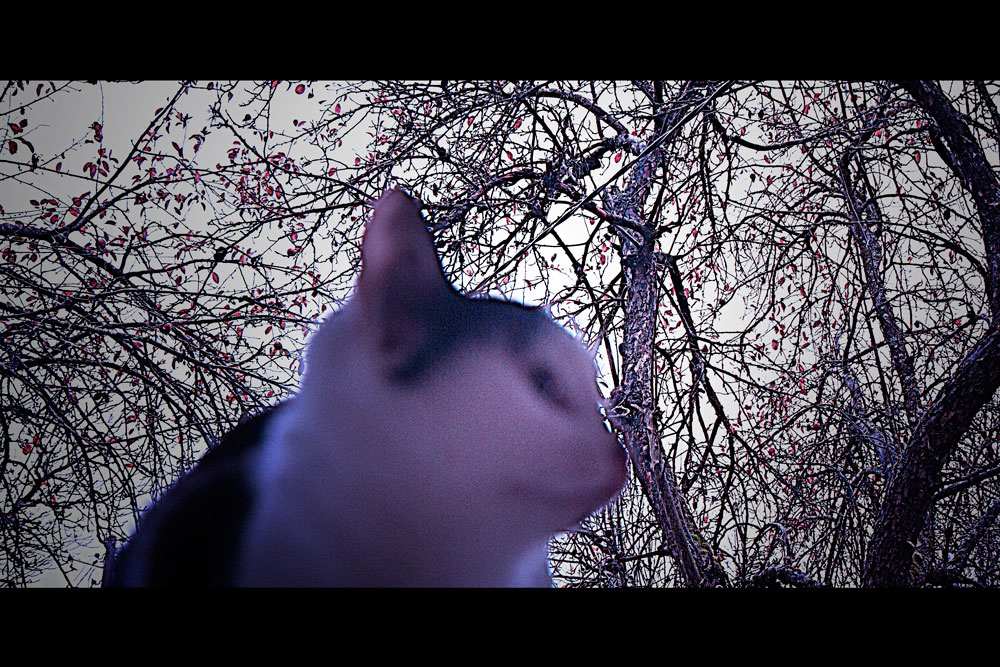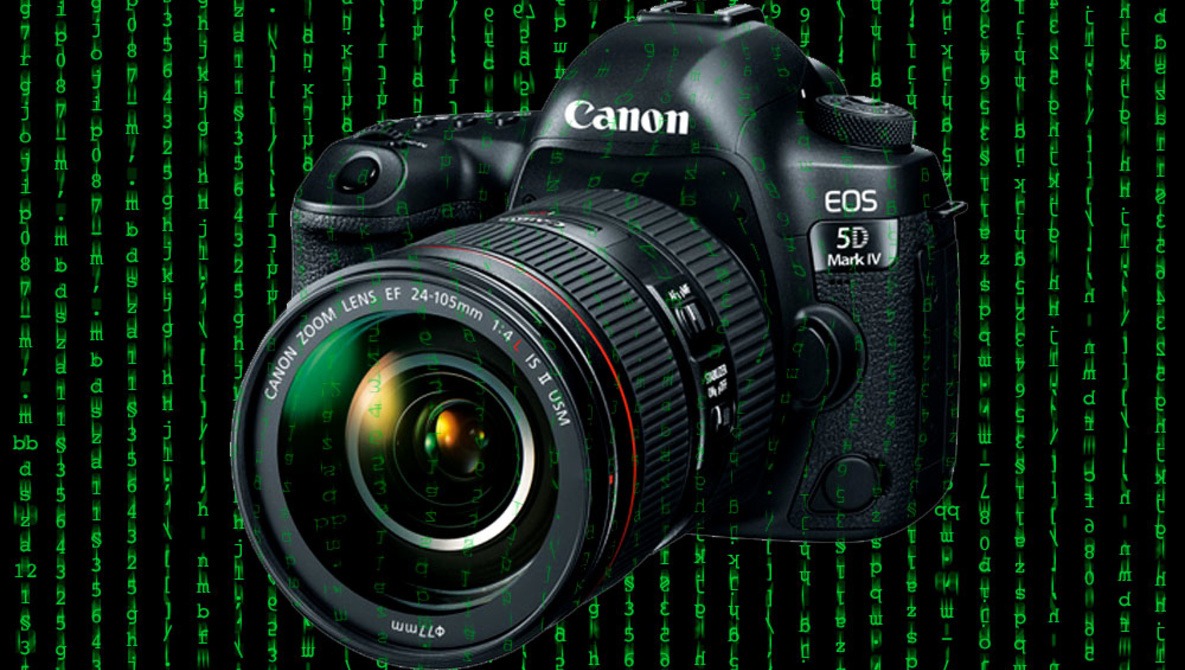Photography today is more accessible than ever before because cameras are everywhere: not only shaped as DSLRs, but in phones, tablets, laptops, and in the James Bond ball-point pen. It is easy to press a button a capture something your camera is pointed to. Lots of people are thinking about taking the snapshot game to another level: buying a professional camera and making professional photographs. Most of these purchases end with disappointments, but there's not much talk about them. This article will take a peek behind the scenes of the failures newbies face when they first try using a DSLR.
The Usual Suspects
You are like everyone else taking pictures with your phone. You want to be recognized as a photographer; maybe not professional, but at least a good one. Today all your friends have cameras in their pockets and also make photographs. How to be a "real" photographer? You buy a professional-looking camera.
The First Click
Unboxing a new camera is a sacred event, recorded and shared with the world. You feel how this box of electronics has something special in it. For sure it has AI (artificial intelligence), which connects with your brain waves. You don't waste time reading the manual. Manuals are for absolute beginners. You just need to concentrate on that shutter button.
You point the camera to a special subject around you, like your cat on the window, and click. The image appears on the back of the DSLR. Well... nice try, but it's not like in the magazines. The cat is a silhouette and blurred. The trees in your backyard are in focus, and you clearly see your neighbor in briefs.

Your usual first picture of a cat on a window. If you wonder where the neighbor is, he has been cropped out of the picture for obvious reasons.
You turn a few dials, take a deep breath, and wait for the AI to kick in. You feel the inspiration flowing and press the button again. The camera's mechanism sounds disturbingly slow. Everything's almost white except for a motion-blurred object, that is obviously your cat which lost interest in your art. If you didn't know this was your image, it could easily make it for a conspiracy news headline picture. The unfortunate truth is you have better photos of your cat taken with your cell phone camera.

UFO?
The Key Must Be In the Manual
You decide to read the manual, after all. Several hours later you understand that your camera is not slow or broken, but you have shot a picture with a slow shutter speed. The camera manual ends with some boring legal stuff just before you thought the next chapter would be "Settings for Creating Masterpieces." You recall the M mode. Professional photographers are usually sneaky and full of secrecy. You are sure there's a hidden meaning behind that M, which could stand for "Magazine" mode, or maybe "Masterpiece" mode, or most probably, "Magic" mode. You make a few photos with the dial set to M and the aperture set to f/22, because it sounds like a successful military technology. The images are pitch black.
Online Recipes
You start looking online for "best camera settings for portraits." You eventually land on this article, and without reading the beginning of it, you start searching for the holy trinity of the exposure: ISO, Aperture, Shutter speed. Just for the sake of getting your attention, I will share two of the multitude of "recipes" I have used in my career, that lead to professional correctly exposed images: f/5.6, 1/200, ISO 320. Another recipe for success is: f/11, 1/160, ISO 100. To prove I'm not lying, I'm including an actual image taken with the first recipe:

You try those "professional settings" and find they are not working at all in your situation. You put your cat against a white wall and try the first set of settings. Absolute disaster. The photo is quite dark. You try the second one, just in case, and the result is almost pitch black. Oh, I forgot to tell you that shooting a portrait on a pure white background requires at least one extra light that points to the white wall independently from your subject. That light can be anything: the sun, an artificial continuous light source, a studio strobe, or a speedlight.
Before you decide this article is making fun of you (it's not, I'm honest), read the remainder.
Photo Software
Your phone battery dies because it is still recording your unboxing video and unsuccessful attempts. Of course, the latter will be cut out from the final video. You download a trial of Photoshop and search for videos that may help fix the images you have taken. The first video is 10 minutes long, and you don't have the time to watch it. The second one is only one minute, but it shows how to do "professional" retouch of a portrait by using the Blur filter in just 14 seconds. The third one is six minutes long and ends with a link to a paid tutorial without showing you anything practical. Three hours later you are a master of Curves. No, I don't mean master of shooting boudoir. I mean you can almost fix the intensity of the images you exposed incorrectly. Finally, they look almost identical to your cell phone camera's images. Learning how to use Curves, Unsharp mask, and Photo filters seem to be the essential skill set for every photographer, and make all the difference from your usual cell phone images, you think.

Blue photo filter used for more drama. Added black bars for an authentic cinematic look. A good thing about retouching cat portraits is they don't require skin smoothing.
The Hidden Disappointment
Your friends start to ask you to share images you have taken with your new "professional camera." "How is it," they ask. What would you answer? The honest reply would be: I purchased gear that doesn't make anything different than I used to do with my cell phone. The key seems to be somewhere else.
Who dares to confess that? Not many, but when the next new camera comes on the market it's purchased because the M mode is probably more magical.
The Good News
Gear is important and helps indeed, but only if you know what you are doing. Before returning the camera, buying a new one, or answering your friend's question "How's the new camera?" with a lie, better take some time to learn the secrets. It requires patience, but it's worth it. A great start for both new and established photographers are Fstoppers' tutorials. Pick yourself one and learn how to keep your neighbor's briefs blurred.







I knew it. The guys who were (and are) related to Formula 1 (F1) never had problems with balance (whether it's white, black, or other hue).
There will be an article on colors very soon. Mainly for those who are not in the racing cars business.
I kind of had the opposite experience. I loved the results of my first couple shoots. Hell, there are shots from those that are still in my portfolio 4 years later and they got me offered paid work straight away. This is too easy, I thought at the time. I figured absolute mastery of this will just require me to sit back and take more photos. Which is what I did and so for the next 3 years I did not progress at all from my first shoot. At all. The first shot I took with my fancy camera was still the front page of my website years later. It took a long time to drum into myself that I was going to have to put in some study if I wanted to improve.
My first ever edited shot. I still like it.
My first shoots were also nice looking, because I spent time to read about the craft many months before I bought my camera. However the first shots (not shoots) with the camera were... not like in a magazine :)
Amusing article. I know I made many mistakes with my photography, still do, but practice really does help. A lot more than a new camera does too. At some point I seem to have settled into what you might call a style, good enough to be publicly displayed at exhibitions, but if you asked me to pinpoint just what that moment was, I couldn't tell you. It's cumulative, and never stops. I think much of the fun of photography lies in that process - certainly, just as much as getting a satisfying result.
When I attempted to use the camera on M, everything was black on the lcd screen, I couldn't fix it, so I was afraid I had broken our new camera. When I tested again in auto mode and photos were ok, I realized I had simply screwed up, and looked for online articles about ISO and shutter speed, just like you said.
Hahahahahahaha. Very funny story indeed.
Possibly the biggest lie is AF.
Like any auto device it is right only a certain percentage of the time. In the hands of a beginner that can be close to zero.
Even today the raging disputes about who has better AF is pointless as none are magical and some suck only slightly less than another.
I still find auto focus the best auto-feature in the camera. I don't use it only when shooting video.
Yes, I have some auto-focus & some manual focus lenses. But one time I put on my manual focus 18mm lens pointed the camera & fired. Got a lovely exposed blurry photo. I was so used to the auto-focus that I forgot to turn the focus ring with my manual fingers lol.
I get the same experience over and over when I lend my camera to someone in the family who says they want to take a portrait of me with my camera. There is no automatic function. The photos are usually out of focus, and either under or over exposed. Unless I do all of the settings ahead of time with and over explain focus points.
The reality of professional vs beginner DSLR's is that they are often more difficult to use because you are expected to understand more about creating images. When I went serious with my first dslr I was fortunate to be part of a camera community where I got guiding and very good critics about my shots. I also learned to use the manual settings (shot mostly birds then) and I was eager to learn and spent a great deal of time doing it.
The key where I think many new photographers stop at is the expectancy that they will take great pictures right away. That they do not give themselves time to practice.
True
My story actually is quite different somehow.
I've started with a Olympus Mju700 back in 2006, point and shoot, also with a Nokia N70.
Well..i've started way before that, some 25 years ago. There was, at our local coffeeshop, a print of the Golden Gate Bridge and the 5 year old me was allways looking at it, all those streaks of light left by the cars crossing, the yellow fog somehow over San Francisco, it was a night landscape.
Later in my life, 15 years later i had my first job and boght me a point and shoot, the Olympus Mju700. I was already on my senior highschool year, and one day i was with the camera at night, over a clifftop and when i shot it, without flash, guess what? 4 seconds exposure triggered and i've noticed that "wow...the streaks of light from that picture", well, the other lights were all shaky aswell, so, i've sitted the camera over a small bench and pointed it back at the highway again, same trick and now i had streaks of light over the road!! My heart jumped, that feeling like a dream come true, the energy!
My dad had his Sony F828, so i kind of stole it, it had manual mode and all those gizmos back in the day. I've figured out light streaks and night landscape, then i saw photos of the milky way, tried them with my Sony...all i saw were red pixels. What in the hell was that? Noise!!
In 2009 i was studying and working at the same time, took all my savings and bought a Canon EOS 500D / T1i (bonus, it had video).
By this time, I had all the manual thinguies figured out from the Sony F828, adapting was not an issue, but then...something was missing and that miss would later translate to Sigma 10-20. So i've started shooting the milky way, there was still noise, but, i had my milky way!
Now I have my 6D, and photography became boring, not much else can be done, from strobes, to natural light, from Dani Diamond tutorials to Tribe Red Leaf presets, from Rallysport to snails, I did a bit of everything. You can see it on my gallery.
But still, I don't have my own Golden Gate Bridge picture.
Nice story.
The problem with being bored with photography is because you have to think of it in a different way. You could be bored of photographing people looking at the camera. Think of photography as the painters did their projects or as movie making. When you start adding more than a nice looking person staring at the camera, you will suddenly see a vast sea of ideas.
You do realise Paulo that to get your own Golden Gate Bridge picture you do actually have to go to to San Francisco lol